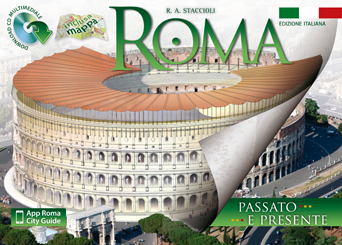The column stood 45 meters high above the ground level of a relatively small colonnaded courtyard (25 x 18 m) surrounded by two libraries, a basilica and a temple and was built throughout of finely jointed blocks and drums of arrara marble of colossal dimensions (each drum weighed about 40 tons).
This extraordinary monument was built by the emperor Trajan to celebrate his victorious campaigns against the Dacians and to be used as his tomb.
It was inaugurated on May 12th, 113 AD.
The Dacians were the turbulent inhabitants of a region corresponding to present day Romania on the other side of the Danube river which marked the frontier of the Roman empire in Eastern Europe.
Inside were carved a tomb-chamber and a stairway leading to the top were there was placed a statue of the Emperor which was lost.
A 200 meter frieze winding upwards 23 times around the column tells the story of Trajan’s various campaigns with vivid descriptions of the Roman army in combat, of its weapons, equipment, fortifications and even of the relationship between officers and soldiers, victors and prisoners.
The column depicts many scenes as, for example:
- ships loading supplies in front of the Roman fortifications lining the river bank frontier;
- the Roman army crossing the Danube on boat bridges;
- the building of fortified camps inside enemy territory;
- Trajan encouraging and praising his troops;
- bloody battle scenes;
- the caring for the wounded;
- the surrendering of the enemy to the victorious emperor;
- the inauguration of the permanent bridge built by Trajan over the Danube which is to be considered as a notable feat of Roman military engineering.

Do you want to know more about the history of Rome?
Check out our guidebook to Rome, with detailed history and Past & Present images of the Pantheon, the Colosseum, Trajan’s Market and all the greatest historical and archaeological sites of the eternal city.

